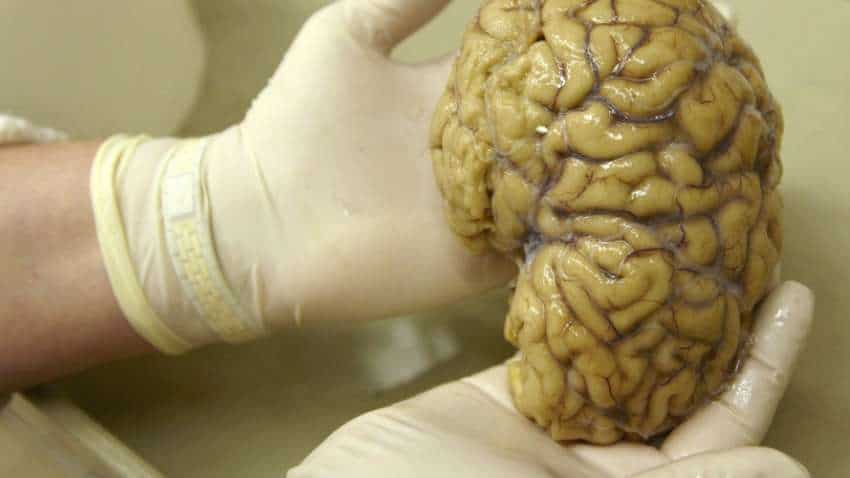A continuous state of vigilance generates a different type of memory in mice than a momentary startle, and these differences are linked to distinct chemical processes in their brains, according to a study that may shed light on how traumatic memories are consolidated.
Researchers, including those at the RIKEN Center for Brain Science (CBS) in Japan, visualised new chemical interactions in the living mouse brain for the first time, observing molecular pathways that support memory function.
They observed these processes in the star-shaped brain cells called astrocytes, revealing how these cells help nerves during memory formation, according to the study, published in the journal Nature Communications.
See Zee Business Live TV streaming below:
Previous studies had shown that noradrenaline — a hormone that is also a nerve activator — is important for modifying the junctions between neurons, involved in forming and consolidating memories.
These studies had established that the astrocytes were crucial mediators of the chemical reactions in these junctions, the researchers said.
In the current study, the scientists artificially stimulated brain cells with light — an emerging technique called optogenetics — and induced noradrenaline release.
They stimulated neurons originating in a part of the brain called the locus coeruleus, which is located in the brain stem region, and involved in biological responses to stress and panic.
According to the researchers, the hormone's release launched two distinct chains of molecular events, the first involving calcium activity, and the second cAMP — a signaling molecule whose levels are interpreted by cells to understand the status of chemical reactions in other cells.
Following the noradrenaline release, calcium levels in the astrocytes quickly increased, while the cAMP levels had a slower but more sustained increase, the study noted.
"We think these fast and slow dynamics are significant because calcium elevation in astrocytes promotes synaptic plasticity, or the ability of cells to form new memory connections, while cAMP elevation mobilises energy metabolism for memory consolidation," said Hajime Hirase, study senior author from RIKEN CBS.
In a second experiment, the scientists gave the mice a foot shock coupled with a sound to create a fear memory.
Hearing the sound again, they said, the mice froze in anticipation of a shock.
The team found that during these cases, the cAMP levels were noticeably elevated, while calcium levels also rose but quickly tapered off.
"When mice are in this sustained state of vigilance, a lot of noradrenaline is released, coupled with gradually building cAMP," explained study first author Yuki Oe from RIKEN CBS.
"This reflects how the astrocytes support the formation of fear memory," Oe added.
The study noted that neither calcium, nor cAMP responses were seen in mice which were given noradrenaline-blocking drugs, indicating that the hormone's release is the trigger for these changes.
Get Latest Business News, Stock Market Updates and Videos; Check your tax outgo through Income Tax Calculator and save money through our Personal Finance coverage. Check Business Breaking News Live on Zee Business Twitter and Facebook. Subscribe on YouTube.
RECOMMENDED STORIES

Mukhyamantri Majhi Ladki Bahin Yojana: Know eligibility, benefits, and documents to apply for this women-centric government scheme

Gratuity Calculator: Rs 37,000 as last-drawn salary; 6 years and 3 months as service period; know your gratuity?

Top 7 Gold ETFs With Highest Annualised Returns in 10 Years: Know how Rs 10 lakh investment in each ETF has performed in last decade

Defence PSU Stock to BUY: This multibagger scrip corrects 49% from 52-week high - Is this right time to buy?

Top 7 Large and Mid Cap Mutual Funds With up to 43% Return in 1 Year: Rs 25,000 monthly SIP investment in No. 1 scheme is now worth Rs 3,64,654

Power of Compounding: Can monthly SIP investment of Rs 7,000 help build corpus of Rs 4.5 crore? See in how many years it can be done
05:15 PM IST













 The importance of social and physical development in preschool
The importance of social and physical development in preschool Supreme Court to Hear Pleas on NEET-UG Exam on Monday
Supreme Court to Hear Pleas on NEET-UG Exam on Monday Edu Tap fined Rs 3 lakh for misleading RBI Grade B exam advertisements
Edu Tap fined Rs 3 lakh for misleading RBI Grade B exam advertisements No intake of students below 16 years, no misleading promises: Guidelines for coaching centres
No intake of students below 16 years, no misleading promises: Guidelines for coaching centres Over 86.8% youngsters in 14-18 age bracket enrolled in educational institutions: ASER
Over 86.8% youngsters in 14-18 age bracket enrolled in educational institutions: ASER